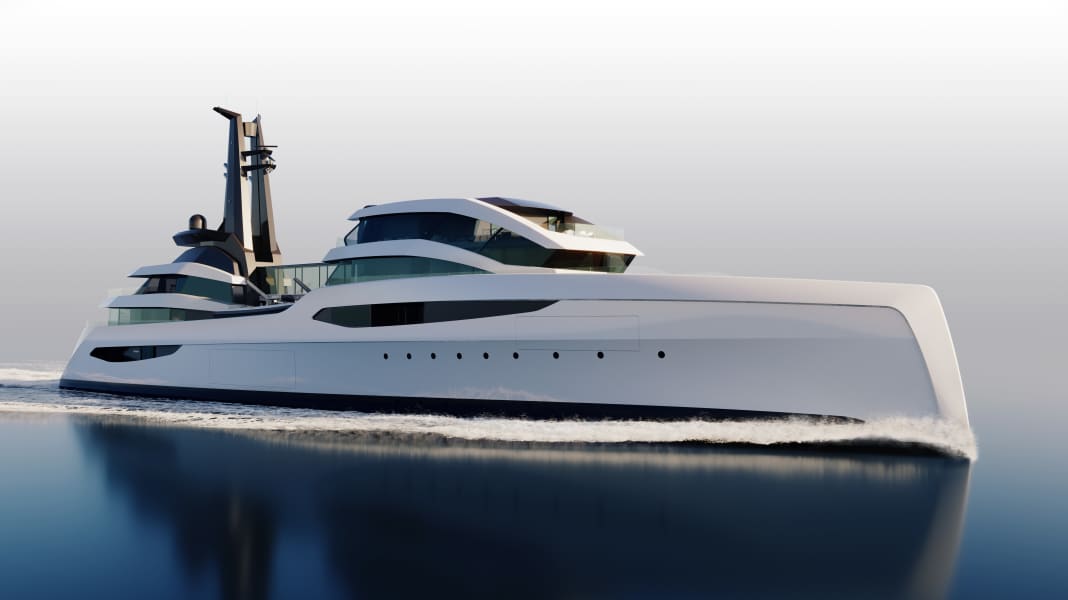
In recent years, a large number of wondrous explorer concepts have been presented. But none have been as radical as EXPV - and, what's more, fully calculated. After all, this project is intended to provide real disruption even after its possible realisation, which will take at least three years to build. Peder Eidsgaard says about the development:
"We took the most important building blocks of a superyacht, threw them up in the air and let them land where they should be."
The London-based studio was founded by Norwegian Peder Eidsgaard and Brit Ben Harrison in 2005; shortly afterwards, Feadship received its first ground-breaking commission with "Tango". The design was very different for the time. EXPV also features the typically dynamic Eidsgaard look.
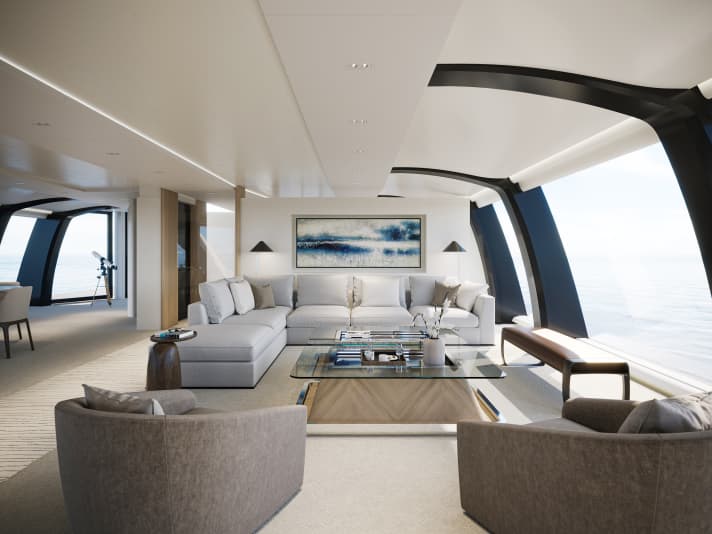
Office with the best view
The observation lounge at the front is representative of the decentralisation of the superstructure. The helm station is concealed beneath it, with the owner's office in a prominent position behind it. "It is a yacht for very experienced owners who want to spend a lot of time on board," says Eidsgaard. He and his team placed the master suite one deck lower in the hull.
It continues with the glass bridge between the front and aft superstructure. Between them are two tenders up to 13.50 metres long - in the style already seen on Feadship's "Sherpa". The division of the superstructure into two sections was shown in the "Lady S", also a Feadship.
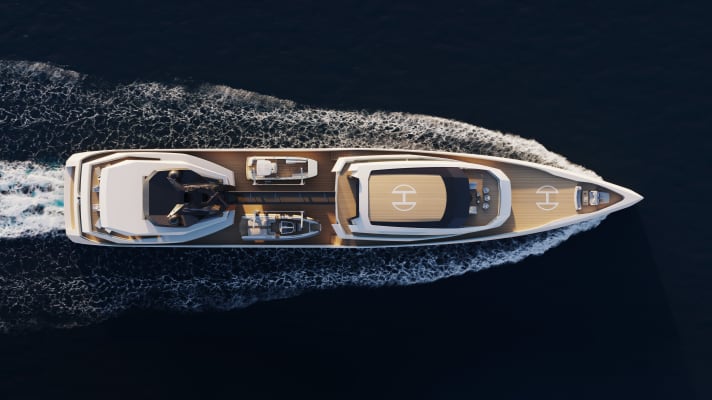
A separate guest house
A completely new feature is the arrangement of all six guest cabins on two decks of the aft superstructure, including their own terraces. Depending on the number of guests on board, the cabins can also be combined to form spacious VIP suites. Peder Eidsgaard calls it a "separate guest house". The inspiration for this came from cruise ships on which the most desirable cabins face outwards and aft.
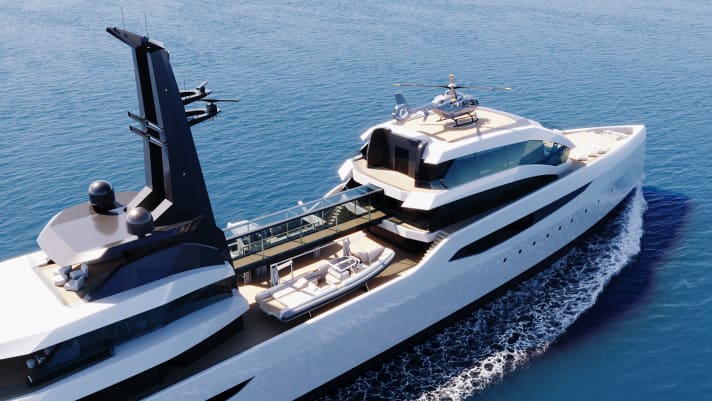
The tender storage on the main deck leaves plenty of space one level below for the "Ocean Lounge" with folding walls and a pool that can be seen from the bathing platform.
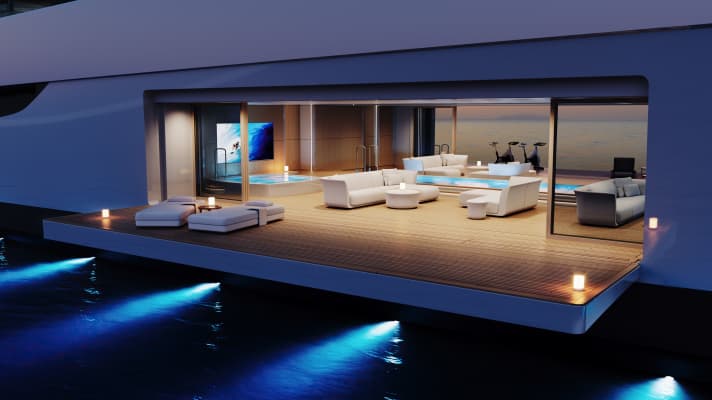
For EXPV, Feadship is proposing a diesel-electric propulsion system consisting of generators and pods, for which the shipyard's own design office De Voogt has developed a flat engine room. The 13.60 metre wide Explorer is to run at 15.5 knots and have a range of 6000 nautical miles with 250,000 litres of diesel and a cruising speed of 14.5 knots.
In this video, Peder Eidsgaard and Feadship Director Jan-Bart Verkuyl explain the 87-metre-long EXPV explorer project:
